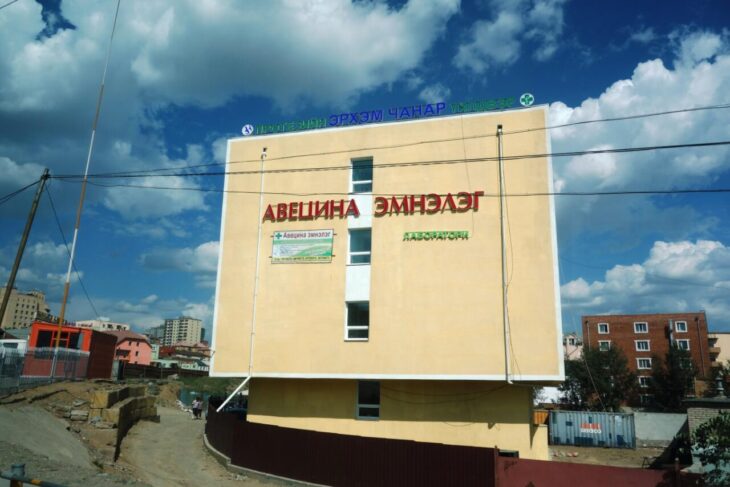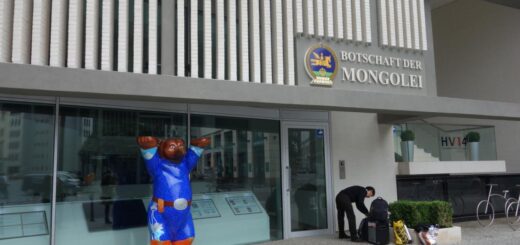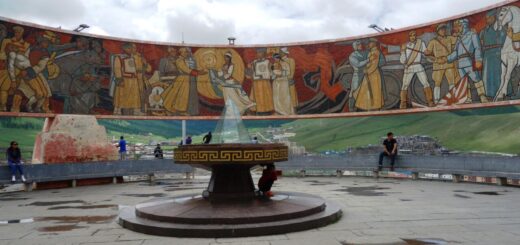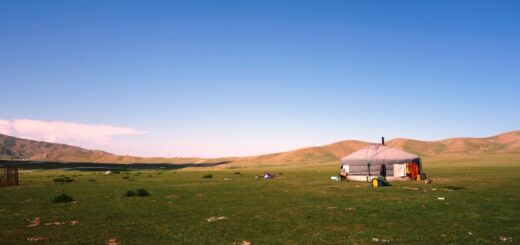Mongolia Health and Welfare
Before the fall of the Wall, the Mongolian healthcare system was one of the exemplary in Asia. But the same applies here as in education: quantity does not always replace quality.
Until the revolution of 1921, the medical care of the people was the sole responsibility of the llama doctors, and the Mongols also used the power of the numerous medicinal plants. The hygienic conditions were catastrophic, the child mortality rate was 50 percent.
According to statistics for the first nine months of 2018, 794 babies died before their first year of life and 991 before their fifth year of life, 27 and 55 more respectively than in the same period last year.
Reasons for this are also the extremely high air pollution in Ulaanbaatar, which in the cold season becomes life-threatening, especially for children.
From January to November 2020, 1,000 children born alive died before the age of 5, two fewer than in the same period of the previous year.
After 1921, with the help of the Soviet Union, the establishment of a modern health system began with considerable success.
Gradually, however, deficiencies in the training and qualification of the medical staff as well as in the technical equipment, in the observance of hygienic standards and in the supply of medicines became noticeable.
After the fall of the Wall in 1990, the living conditions for a large number of people deteriorated. The few industrial companies were closed and jobs were lost. With the economic boom through international development cooperation, the development of mining and government social measures (National Population Development Fund) the situation improved. However, mining and livestock farming are not job-intensive industries. In addition, a workplace “behind a desk” still seems particularly attractive to Mongolians. Working as a shepherd for foreign cattle herders is also not considered particularly desirable. Poverty is still widespread. Almost 22 percent are still considered poor and their access to education, culture and health care is limited. Poverty is distributed differently regionally and seasonally. In winter it increases, as does the distance from the capital. Youth unemployment is particularly high, one reason for this being the disproportion between education and training and the need on the labor market for skilled workers, engineers and technicians.
According to politicsezine, the medical care in Mongolia is free according to the law, and every worker pays into the state health insurance. But the funds are nowhere near enough and payments are due for every benefit. In addition, medical personnel are extremely poorly paid and corruption is widespread.
In addition to the state health facilities, hospitals in Ulaanbaatar and the Aimags (400 2019) and medical bases in the Sums, numerous private hospitals and medical practices (3,262 2019) have been opened.
According to statistics from the Ministry of Health and Sports, 11,788 doctors worked nationwide in 2019, compared to 11,169 in 2018. Health expenditure was equivalent to 2.3 percent of GDP in 2018, compared to 2.2 percent in 2019.
Infectious diseases, especially venereal diseases and tuberculosis, are on the rise. In the first half of 2014, the number of people suffering from hepatitis decreased, but the number of people suffering from tuberculosis increased by 3.4% and that of people with syphilis infection increased by 8.5%.
As of September 2015, 48,829 cases of infectious diseases were registered in the country, compared to only 24,943 cases in 2014.
Due to the age structure of the population, the geographical location between Russia and China and increased mobility, the risk of HIV / AIDS spreading is also growing.
Doctors and nurses from developed countries travel regularly to Mongolia to offer free medical treatment or advice.
In 1995 the Grand State Assembly passed the Law on the Social Security System. These include health, unemployment and pension insurance as well as social assistance benefits for the disabled, orphans and half-orphans. In addition, in the wake of the increasing profits from mining, a national population development fund was set up, from which, among other things, grants for students are paid.
In 2013, the Social Insurance Act was amended so that the 44 or so Tsaatan families (reindeer people) who live far away from permanent settlements and without a regular income can benefit from social insurance benefits (pensions, financial support and social assistance contributions for pregnant women, the elderly, people with disabilities, temporarily unable to work and for special tasks).
Covid-19
At its meeting on September 14, 2020, the government approved the proposal of the National Emergency Commission to extend the increased state of readiness to October 31.
Schools, kindergartens, universities and colleges, on the other hand, can switch to normal operations from September 21st, commercial enterprises, cultural, sports and service facilities from September 16th.
The planned protective measures, hygiene, masks, etc. should be observed and monitored.
The inspectors found numerous violations in the past few days, especially in bars and pubs. In the case of repetitions (e.g. disregard of the mask requirement for serving staff), there is a risk of company closings.
As of December 30, 2020, 1,195 people in Mongolia are infected with SARS-CoV-2.
361 are in treatment, of which 257 with mild symptoms, 96 with moderate symptoms, 6 with severe and two with very severe symptoms.
Nine people have returned home.
From January to December 21, 2020, MIAT carried out 111 special flights to bring 21,092 Mongolian citizens back home from abroad.
The borders between Mongolia and Russia and China passed 6,637 people.
A total of 27,729 people returned to Mongolia, including 627 pregnant women.
The returnees have to go to a quarantine that has now been shortened to 14 days.
The training center of the emergency commission, sanatoriums and hotels are available for this.
After the quarantine immediately after entry, a domestic quarantine must still be observed.
The increased standby status was extended from December 31, 2020 to March 31, 2021.



